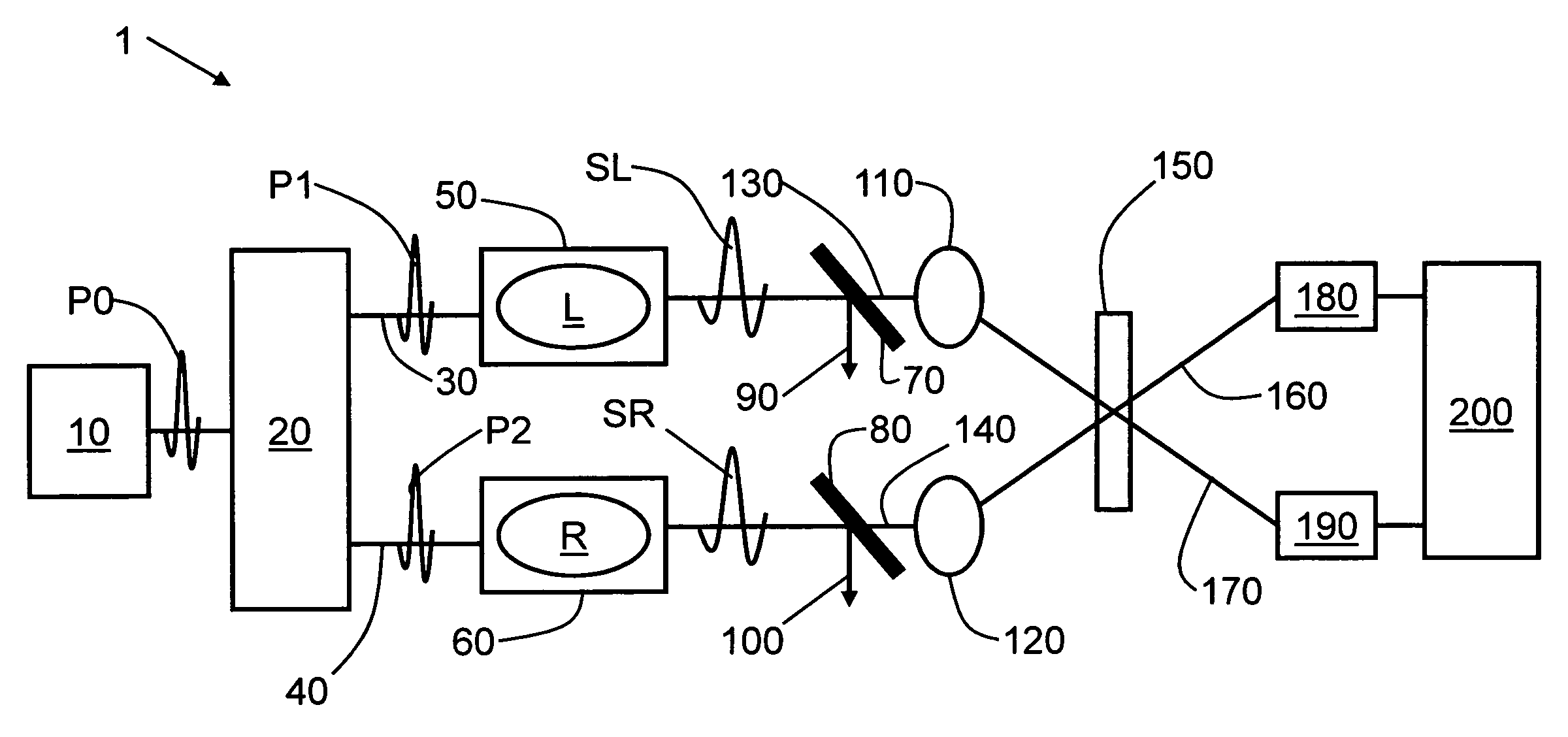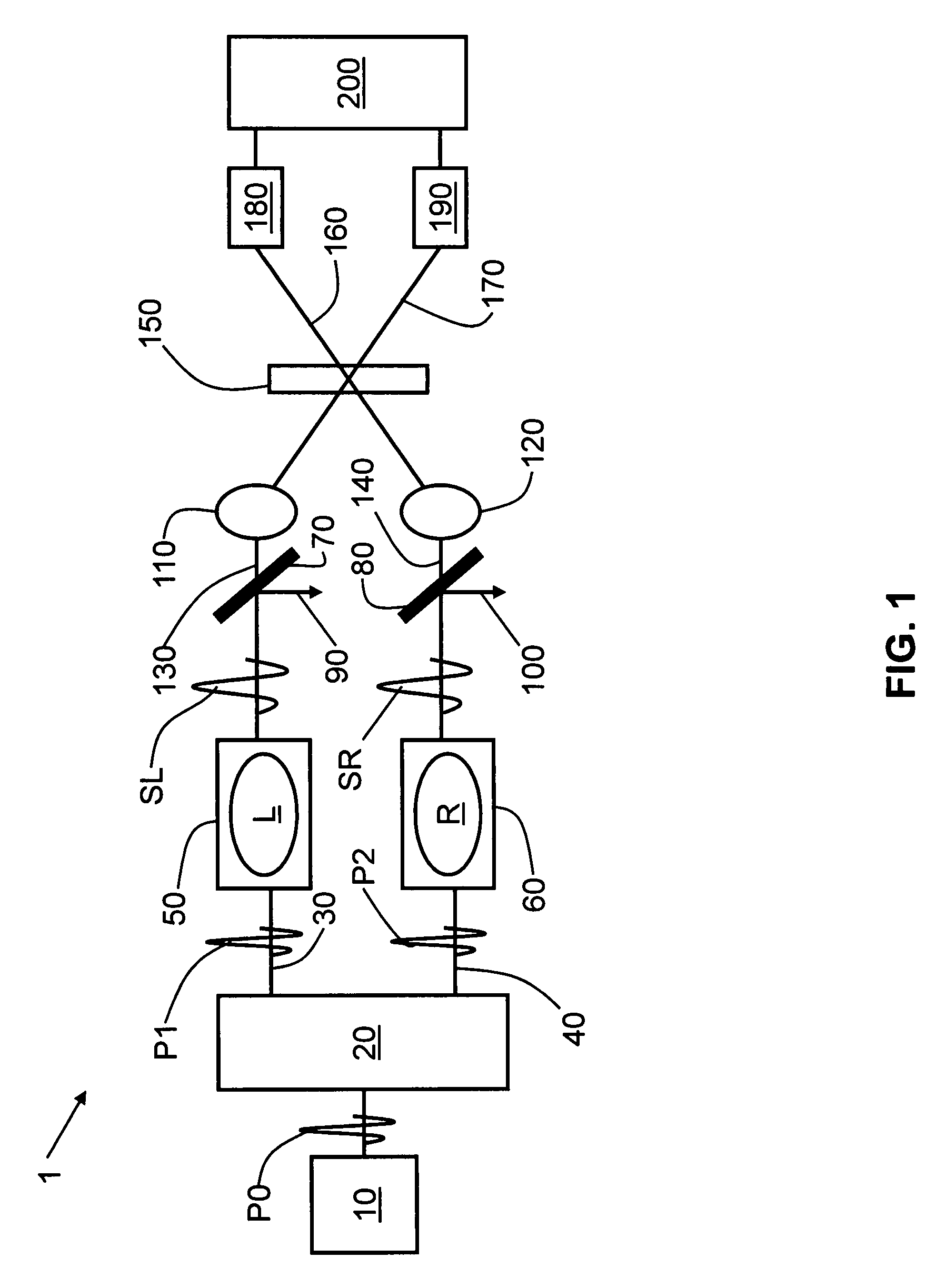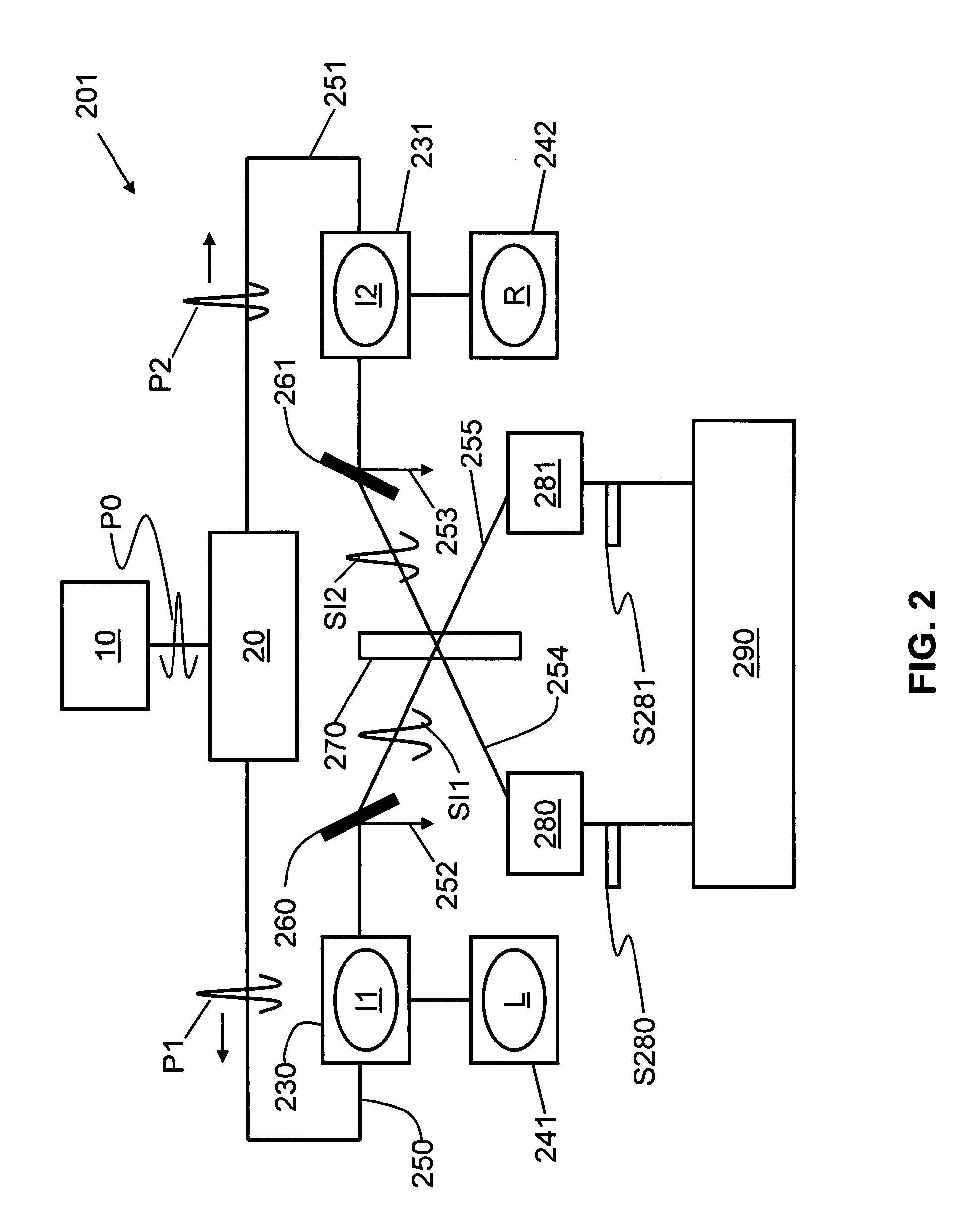Long-distance quantum communication
a quantum communication and long-distance technology, applied in the field of long-distance quantum communication systems, can solve the problems of difficult implementation of quantum repeaters and the probability of this happening decreasing exponentially with the channel length, and achieve the effect of stable quantum memory and long decoherence times
- Summary
- Abstract
- Description
- Claims
- Application Information
AI Technical Summary
Benefits of technology
Problems solved by technology
Method used
Image
Examples
Embodiment Construction
[0020]In some formulas below, the “proportional to” sign is replaced by a box symbol, such as “quadrature,” which also means “proportional to.”
[0021]FIG. 1 is a schematic diagram of an example embodiment of an apparatus 1 for performing quantum entanglement according to the present invention. Apparatus 1 includes a light source 10. Light source 10 may include a pulser or amplitude modulator to convert continuous light to pulsed light. Source 10 may also include electronics for synchronizing laser pulses. Light source 10 emits either continuous light or pulses of light. In an example embodiment, light source 10 is laser.
[0022]Apparatus 1 also includes a light pulse synchronizer 20 optically coupled to light source 10 and from which emanates light beams (pulses) P1 and P2 along optical paths 30 and 40. Synchronizer 20 is adapted to receive light P0 from light source 10 and generate synchronized output beams (e.g., synchronized output pulses P1 and P2) along optical paths 30 and 40. A...
PUM
 Login to View More
Login to View More Abstract
Description
Claims
Application Information
 Login to View More
Login to View More - R&D
- Intellectual Property
- Life Sciences
- Materials
- Tech Scout
- Unparalleled Data Quality
- Higher Quality Content
- 60% Fewer Hallucinations
Browse by: Latest US Patents, China's latest patents, Technical Efficacy Thesaurus, Application Domain, Technology Topic, Popular Technical Reports.
© 2025 PatSnap. All rights reserved.Legal|Privacy policy|Modern Slavery Act Transparency Statement|Sitemap|About US| Contact US: help@patsnap.com



